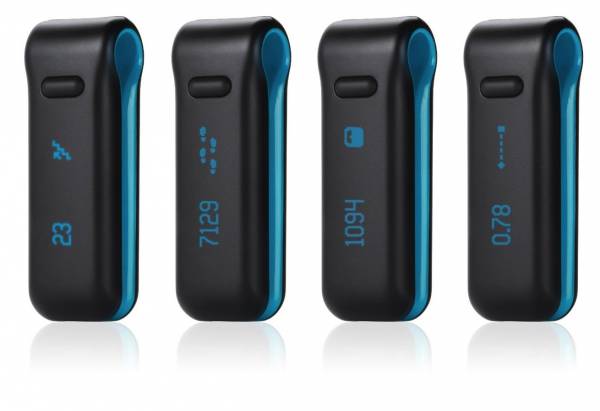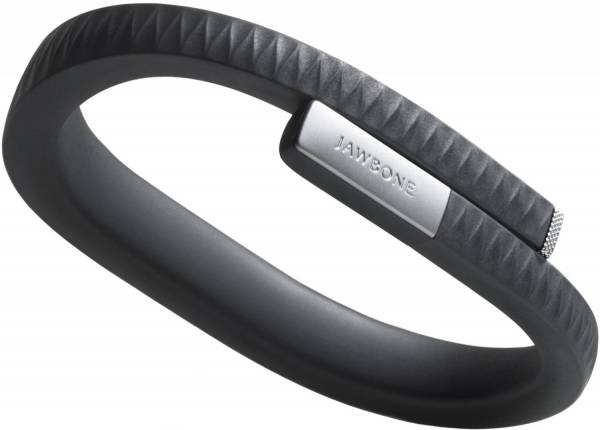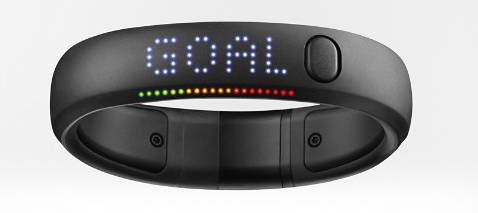A few years back, Nike and Apple teamed up and came out with the Nike+ iPod sensor to track your run mileage and pace. The device fits in a little pouch on your running shoes and comes with a sensor that plugs into your iPod. With the sensor you’re able to track your pace and distance. At the time I was using it, I was training for Hood to Coast, the largest relay race in the country. I found that having the contraption allowed me to prepare for the race by accurately tracking my mileage and seeing my run times progress.
As the race got closer, my fascination with the data I was tracking became more like an obsession as I was constantly trying to top the stats from my last run. Instead of enjoying my runs and looking around to appreciate the beauty of the Pacific Northwest, I found myself trying to push harder and harder, racing against my previous times. While I was grateful that the Nike+ device helped me get faster and prepare for the event, running with it also became more like a chore instead of something to look forward to. It felt like work. After the race, I put the gadget away and never wore it again.
Since that apparatus came out, many similar fitness-tracking devices have come into the market. Nike now makes the FuelBand, Jawbone has the UP band, and it seems like the Fitbit is all the rave. There are devices that tell us how far or fast we run, while others tell us how much we sleep get. Some devices count steps, while others measure heart rate. Until recently, the only people with access to this kind of data were athletes and only through the assistance of coaches, labs, and scientists. Now everyone can track not only how many calories they take in, but how many they burn each day as well.
But the question remains: are these devices a good thing? I think the answer depends on how you use them, as is the case with any technology. Data can help you pinpoint your weak spots, and in that way, having a device like the Fitbit can help you get healthier and more athletic. However, getting bogged down in the data has its downsides, too.
The Good
Knowledge is power. In order to succeed in sport and fitness, you must have a plan. The foundation of that plan is knowing your starting point. The only way you can achieve your goals is to know where you are and where you’re going. These devices help us do exactly that. These devices provide a ballpark range of daily activity level and in that is most certainly a good thing.

The discovery process of mining the data. Compiling data sheds light on the big picture. Sometimes we need a reminder of just how active we are or are not. As I started wearing the Fitbit, I noticed that on an active day, I was taking about 15,000 to 25,0000 steps. On a slower day that number is 7,000 to 12,000. I didn’t think much about it until a client of mine who has a desk job mentioned her daily goal was to get a minimum of 6,000 steps a day. Analyzing the data made me realize how fortunate I am to have a career and lifestyle based on moving around.
Accountability. Mark Twain said there are three types of lies, “Lies, damned lies, and statistics.” That said, it’s hard to argue with the numbers when you wear a Fitbit or similar type device. The only way to hit your target numbers is to earn them by moving. If you need that extra little push in getting active and staying true to yourself, one of these devices might help you do just that.
The Bad
Accuracy. As I was doing a bit of research for this article I noticed some people pointing out disparities of data when wearing multiple devices. If you wear two devices measure steps, and you get a different number from each device, then which number is more accurate? This begs the question of how completely accurate any of the devices are.

Not able to measure every mode of activity. Recently, while on a skiing trip in Colorado I discovered the Fitbit was unable to measure vertical feet. Even worse, it couldn’t measure my movement or calories I burned while snowboarding either. Apparently skating, skiing, and gliding are hard to measure. This reminds me of when I tried wearing the bodybugg for a while and though it seemed pretty accurate for my general activity, it didn’t read much for my bike rides – unless I wore it on my ankle!
Analysis paralysis. When you start exploring a scientific approach to fitness and wellness, there’s always the prospect of getting lost in the numbers. Science can tell us our VO2 max or our BMR. Science can tell us how many steps we take a day. But data cannot motivate us or shed light on what is behind the things we do. Sometimes information and analysis can distract us from getting to the important emotional construct of our behavioral patterns. In short, you must be careful with a fitness tracking wearable that it doesn’t become your whole focus.
The Bottom Line
When it comes down to the question of whether you should buy a device like the Fitbit, I’d say it depends on where you are in your fitness journey. Knowledge is indeed power, and you have to know where you are and where you’re going in order to get somewhere. From that standpoint, a device can give you much needed baseline data. Aafter a cost-benefit analysis, though, you have to to wonder if $100 to $150 (the approximate retail price for such devices) is worth it in the long run, if you only wear one in the short run?

As to the differences in the products, I like the Fitbit better than I liked the Jawbone UP, but that is just my preference. Both the Jawbone and Fitbit apps are fairly easy to use and offer a decent presentation of the data. Because I coach a lot of boxing, a bracelet device gets in the way and doesn’t work as well for me as one that fits easily in my pocket. Most manufactures now make devices that can fit either on the wrist or attached to your belt or pocket. The downside to the devices that fit in your pocket is that it’s easier to lose or forget them. I’ve had the experience more than once of forgetting my Fitbit in my pants when I changed into shorts to go on a run.
In the end, these devices feel more like a short-term aid versus something that helps make long-term lifestyle transformation. A Fitbit may help you to get excited about moving more, but the question remains well it help you stay excited in the long run? Ultimately, all that matters when it comes to fitness is developing a lasting motivation by finding genuine enjoyment, satisfaction, and purpose in what you do. I like my Fitbit, but I doubt I’ll be wearing one three months from now. The novelty simply wears off.
Photo 1 courtesy of Shutterstock.






